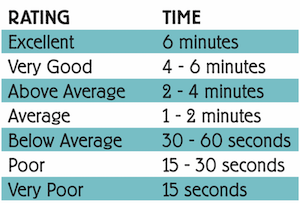I know it’s only August, but trust me, ski season will be here before you know it. In fact, I can pretty much guarantee that before long we’ll be seeing all sorts of articles about getting in shape for skiing. It’s like clockwork; once Labor Day hits, you can hardly turn on your computer without seeing a link to one thing or another about ski fitness.
So why wait? One of the things that’s often overlooked, but that’s so, so critical, is core strength. Core strength refers to the muscles in your lower back, glutes, and abdominal muscles. The core connects the four major extremities of the body, transferring energy from the upper body to lower body and back.

Why is core strength important? Simple. A strong core can influence your balance to keep you from falling and help provide you with greater control on the slopes. Think of your core as the tree trunk of your body: It has to hold its ground so that your branches (arms and legs) can do their thing.
So how can you tell if your core is weak?
If any of the following things apply to you, you need to work on your core strength (from Under Armour’s MyFitnessPal blog):
• Your lower back hurts or is stiff after you exercise. Sure, there are lots of causes for lower back pain or stiffness. But if it’s not an injury, it could be a weak core.
• You have poor posture. A weak core can throw your posture out of alignment. So if you find yourself hunched over or slouching, it could be your core muscles need work.
• You need help getting up when you sit on the floor. If you can’t stand up without placing your hands on your knees or the floor, it’s likely you’d benefit from some extra core work.
• You unintentionally hold your breath when you exercise. I’m sure you’ve all heard fitness coaches encouraging you to breath when you work out. If you can’t do this, it could be a sign that the exercise is too intense. Your core is part of what makes it possible to keep breathing while moving, and being able to do so is a sign your core is working efficiently.
• You have balance issues. If you’re having a hard time with the standing series in your weekly yoga class, your core could be partially to blame. Your core muscles stabilize your body when you move, especially when you make sudden movements like turning or twisting. So if you find yourself yelling “Timber” as you crash out of Tree, it could be your core.
• Your plank form leaves something to be desired. The plank is an isometric exercise that engages the muscles in your abdominals, lower back, hips and arms. Planking is fairly simple: you assume a modified push-up position with your elbows bent 90 degrees and both forearms resting on the floor; your elbows should be positioned directly beneath your shoulders, and your head facing down. Your body should form a perfectly straight  line from the crown of your head to your heel.
line from the crown of your head to your heel.
The Plank Test (otherwise known as the Prone Bridge Test), is an excellent way to evaluate core strength. Position a stopwatch where you can see it and get in the plank position. Start the stopwatch; the test ends when you’re unable to hold your back straight or keep your hips from sagging. The table to the right is a rough indicator of your core strength based on your time.
How to improve your core strength
Core exercises train the muscles in your pelvis, lower back, hips, and abdomen to work in harmony. Building the proper base will not only help you avoid injury, but will help you perform better, too.
I’m not a personal trainer (nor do I play one on TV), so I’m not going to recommend a lot of core exercises for you; see your personal trainer for that. But if you don’t have a trainer, there’s always the internet. I found some good videos of core strengthening exercises on Youtube. Here’s a good core workout for women:


![How to stay motivated [Translation: whatever works].](https://www.theskidiva.com/wp-content/uploads/2014/07/exercise_motivation.png)
